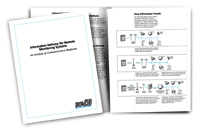 |
||
 |
||
 |
||
 |
||
 |
||
 |
||
 |
||
 |
||
 |
||
 |
||
 |
||
 |
||
 |
||
 |
||
 |
||
|
|
|

RACO White Paper Offers Guidelines for Selecting Appropriate RTU Communication Platform
Emeryville, Calif., February 23, 2004 - RACO has released a white paper offering information that aids in the process of selecting a communication platform for remote monitoring applications. The paper discusses the advantages and disadvantages of three specific platforms: landline, cellular wireless, and control channel cellular. To ensure that the appropriate platform is chosen, and to help plant managers and engineers make important decisions regarding communication infrastructure, a clearly defined set of business objectives, application requirements and communication delivery criteria must be established and carefully evaluated. As an aid in this effort, the most prominent section of the paper features a comparative analysis chart that assists in choosing the best platform for the application. It provides detailed information on variables such as supported functions, capabilities, risks and costs, and how they correspond to each communication platform. In addition, a related section called "Making the Decision" helps evaluate all the options available, guiding the reader through a series of questions to ask when choosing a platform, and then referring back to the comparison chart to analyze each option according to the application requirement. The white paper also provides a background of the remote monitoring systems market and an overview of each communication platform. For over 50 years and with more than 30,000 installation locations, RACO Manufacturing and Engineering Company of Emeryville, Calif. has provided municipalities, industry and government with a wide variety of high quality, reliable remote communications systems and RTUs for data logging, alarm autodialing, remote monitoring, reporting and control. For more information, contact RACO at 1400 62nd St., Emeryville, CA 94608; Ph: 800-722-6999; Fax: 510-658-3153; e-mail: sales@racoman.com; or visit www.racoman.com.
Copyright © 1998- RACO. All rights reserved. User Agreement and Privacy Policy statements. |

